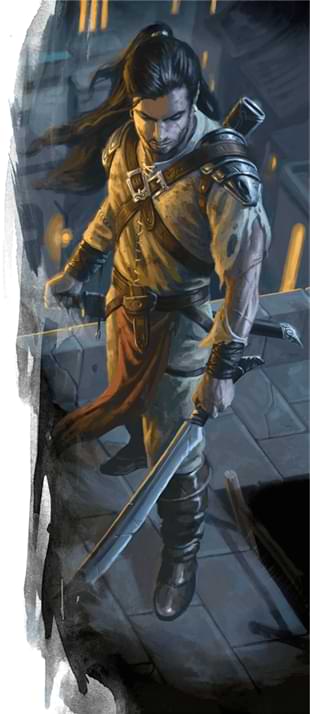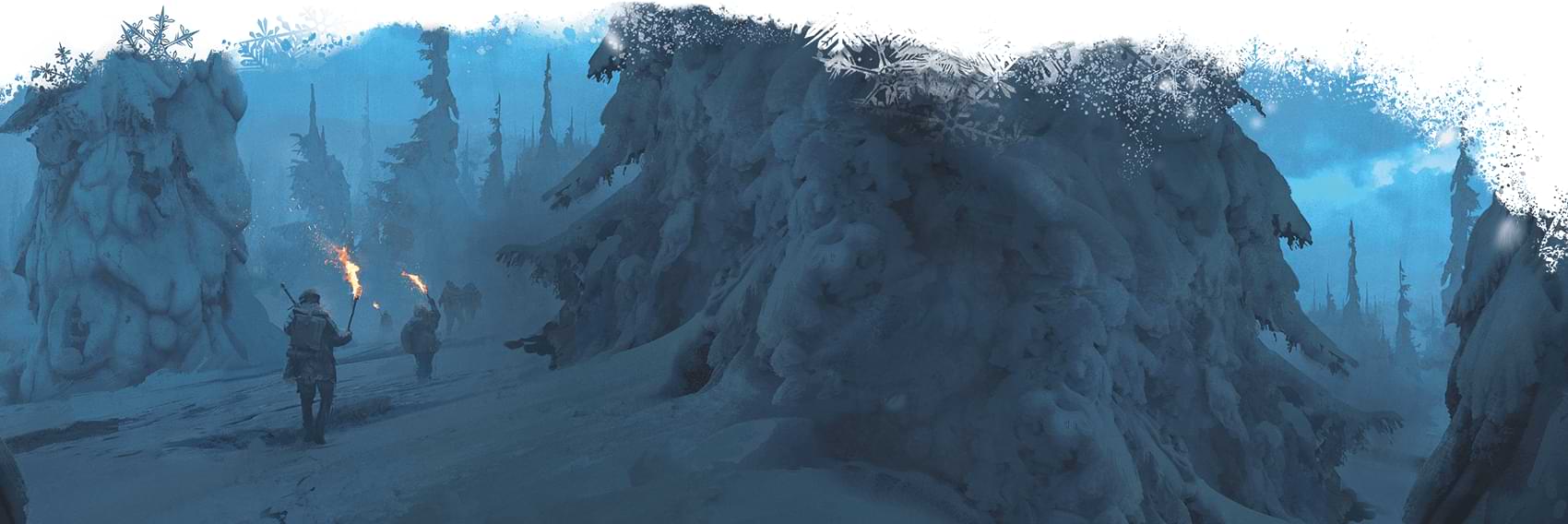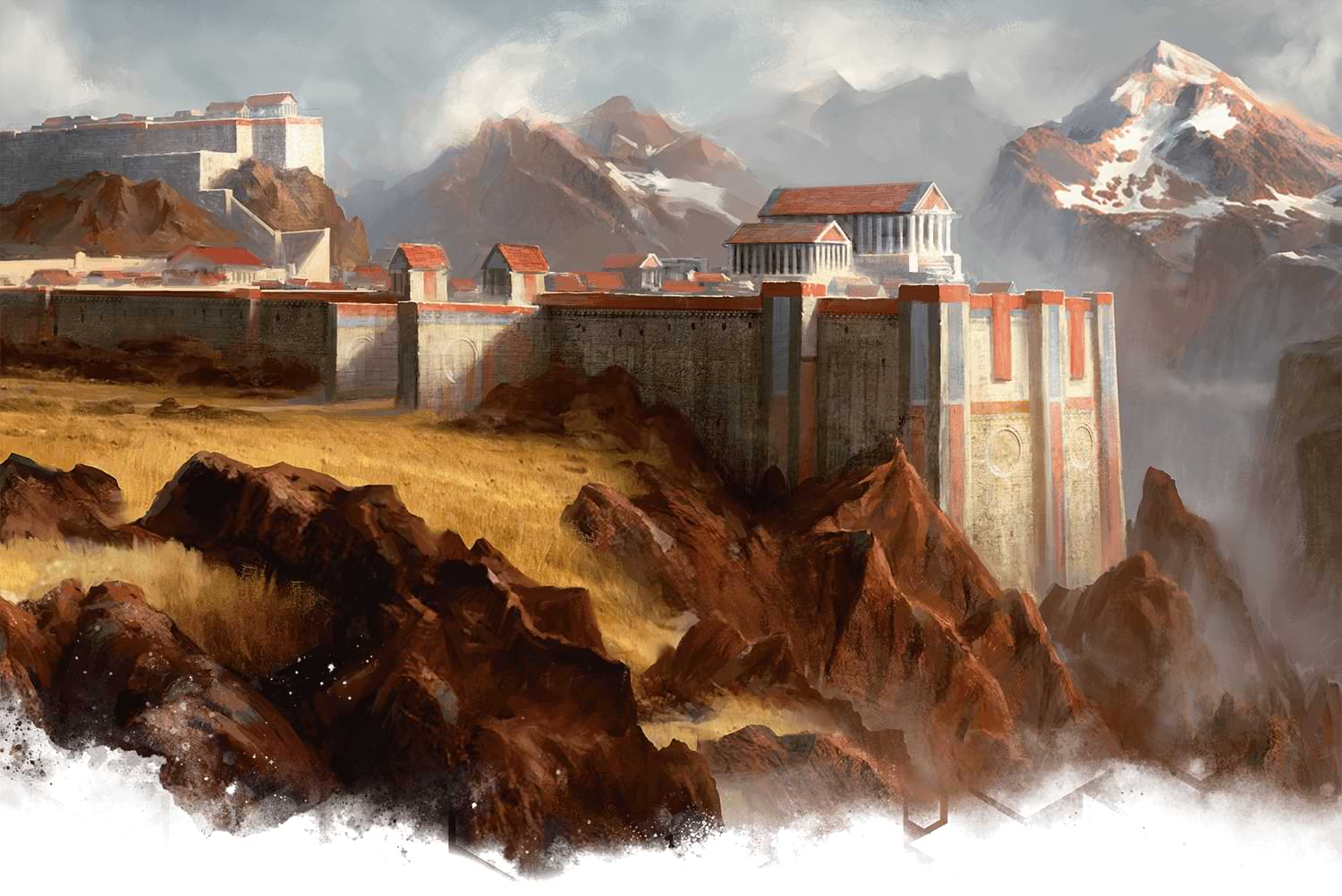Dungeons & Dragons is a game where you can play as heroic characters as they storm the tower of a lich seeking to ascend to godhood or traverse the multiverse in search of an ancient relic. But, what if you’re looking for a play experience that’s more down to earth? Whether you want to play in a slow-burn political thriller full of alliances and assassinations, or a sprawling journey across the rugged scenery of New Zealand, a low magic campaign might be right for you.
In this article, we'll get into the nitty-gritty of running a low magic campaign that will immerse and thrill your players!
What Is a Low Magic Campaign?
 Low magic refers to subsections of fantasy where the fantastical elements of the genre appear less often when compared to heroic fantasy (aka traditional D&D). There's no exact criteria for low magic fantasy settings, though in D&D terms running a low magic campaign could imply:
Low magic refers to subsections of fantasy where the fantastical elements of the genre appear less often when compared to heroic fantasy (aka traditional D&D). There's no exact criteria for low magic fantasy settings, though in D&D terms running a low magic campaign could imply:
- There are no non-human races or a few non-human races that live on the fringes of human society
- Magic and magical items are exceedingly rare, and the typical commoner will likely not encounter them in their lifetime
- Monsters and gods are all but myths to the general population
Player Classes in Low Magic Settings
In these types of settings, nonmagical martial classes like barbarians, fighters, and rogues are much more common than spellcasters, both for players and the enemies they face. Druids, monks, paladins, and rangers may appear, but they will be quite rare and usually hail from locations far from civilization. The supernatural abilities these classes tote will likely be pared down, whether by coming up with a nonmagical way to describe them or replacing them with mundane abilities.
Classes that revolve around manipulating the universe's fundamental forces, such as bards, sorcerers, warlocks, and wizards, or by channeling divine power, such as clerics, are extraordinarily rare in these settings, if they are included at all.
Monsters in Low Magic Settings
In low magic settings, the party's main opposition will likely be humans with competing agendas. Depending on your setting, the party could also face off against monsters, though they'd be less common than in heroic fantasy settings. Monsters that could suit a low magic setting include goblins, oversized beasts like giant spiders, and even bugbears, if you prefer that classic D&D flair. When you're looking to up the ante, giants and even dragons are an option.
At the end of the day, just about any monster can be included in a low magic setting. What matters is the monster's impact on the world at large. In some cases, these monsters haven't been seen for generations and are nothing but an old wives' tale before making a resurgence. In others, these monsters are treated as commonplace and don't break the grounded feel of the setting.
Before You Start, Talk to Your Table
Playing in a low magic scenario can be a jarring departure for players that have come up with a traditional D&D experience. Before putting in the work to plan your campaign, make sure you and your table are on the same page with what to expect.
How to Set Up Your Low Magic Campaign

Beyond limiting character options, magic, and monsters, it might be necessary to adjust the core rules of the game in order to provoke a feeling of realism in your low magic setting. Below, we provide some optional rules to help ground the fantastical elements of the D&D system.
Gritty Realism
Gritty Realism is an optional rest variant in the Dungeon Master's Guide that slows down the recovery of hit points and features. Under Gritty Realism, it takes 8 hours to complete a short rest and 7 days for a long rest. This is meant to make players think twice about diving into combat and encourages them to spend more time in the safety of civilization.
This variant works particularly well for political campaigns as the players will have plenty of time for negotiating and espionage while they wait for their abilities to recharge and hit points to regenerate.
Character Advancement
When looking to run a more grounded campaign, it's best to keep characters in the early tiers of play. Levels 1-10 are a sweet spot for low magic games because characters won't have massive pools of hit points or access to high levels spells, which can help keep the stakes high and make gameplay more grounded.
If you're running a long-term game and don't want players to feel stuck in their characters, consider alternate ways of leveling up. For example, if you wanted to cap magic in the world at 3rd level spells, you could allow your party to level normally to 6th level. After that, class features and spell slots wouldn't progress, but characters would be able to choose a feat or alternate subclass feature when they level up.
In terms of rewarding players beyond leveling up, the Dungeon Master's Guide suggests that characters in low magic campaigns should only have one uncommon magic item by the time they reach 11th level. This means you'll have to be creative when handing out loot, as you can easily break the immersion of a low magic setting by handing out powerful gear. Yeah, players might not be getting armor of invulnerability, but perhaps they can be rewarded with a deed to a castle or a boat and crew.
Travel and Exploration
Low magic settings are excellent places to run sprawling, adventurous campaigns. Traveling without the aid of magic means that surviving in the wild becomes a real challenge that won't be easily solved with a casting of goodberry or circumnavigated by teleporting away.
Before running a low magic setting, I'd suggest checking out the Wilderness Survival section of the Dungeon Master's Guide, which provides rollable tables for weather, and rules for wilderness hazards, foraging for food, and becoming lost.
The Finer Details
Using meticulous variant rules that are mostly ignored, like encumbrance and tracking your food and inventory, are more ways to bring realism to low magic campaigns. Obviously, keeping a running tally of your arrows doesn't sound like the most exciting experience, but the real fun comes in when you're lost in a dark forest and only have 5 arrows left in your quiver. Will the party have to backtrack to civilization to restock? Or will they have to keep an extra watch while you scavenge for supplies to make your own? And oh, is that a cluster giant wolf spiders scuttling your way?
If you're okay with magic users in your campaign but want to find ways to restrict their abilities, you could also remove the component pouch or other tools that allow players to ignore some material components when casting spells. That way, casters aren't only restricted by the spell slots they have but also by what materials they were able to scrounge together at the last village.
Creating Your Setting

There are specific campaigns that lend themselves to low magic settings. Believe it or not, when all-powerful spellcasters have the ability to teleport, resurrect the dead, and reshape the world around them, it can drastically change the type of story that can be told.
Low magic campaigns are well-suited to historical fantasy settings because the lack of fantastical elements makes the world you're playing in feel more grounded and realistic. Here are just a few historical periods that can create ideal settings for low magic campaigns:
- Middle Ages: Though the medieval setting is explored thoroughly in traditional D&D, it can look vastly different in low magic settings where magic and monsters are not as prevalent. Those living in this period experienced plenty of hardships, from war to famine and disease. Without access to magic, these issues can threaten society as a whole and may need a group of adventurers to go on an epic quest to find the key to their resolution.
- Ancient Greece: A time of epic adventures, tales of gods and monsters, and conflict. Exploration, especially by sea, will be a substantial pillar of running a low magic setting in ancient Greece. There will also be the opportunity to embark on heroic quests to hunt mythical monsters.
- Feudal Japan: With the failing influence of the emperor and leaders of different armies controlling smaller pieces of land, this period makes a stellar backdrop for low magic settings. The story could revolve around a party of warriors attempting to swing their faction's influence with shrewd negotiation or prowess in combat.
How Low Can You Go?
Low magic campaigns are an interesting departure from traditional D&D and can breathe fresh life into a table that's tired of counterspell battles. These settings alter the focus of D&D, reducing the space that magic occupies and allowing for strategy, roleplay, and exploration to flourish. So, what are you waiting for? It's time to go on an adventure!
Mike Bernier (@arcane_eye) is the founder of Arcane Eye, a site focused on providing useful tips and tricks to all those involved in the world of D&D. Outside of writing for Arcane Eye, Mike spends most of his time playing games, hiking with his girlfriend, and tending the veritable jungle of houseplants that have invaded his house.








-
View User Profile
-
Send Message
Posted Sep 6, 2022"encourages them to spend more time in civilization." doesn't sound like a very interesting way to play D&D unless it's an urban campaign.
-
View User Profile
-
Send Message
Posted Sep 6, 2022Good article. I get so tired of seeing people in forums shout "play a different system!" any time low magic campaigns are brought up. Having said that, I do wish there were more options and more support for low magic campaign in 5E.
-
View User Profile
-
Send Message
Posted Sep 6, 2022Do you think a sourcebook for an original low-magic world and campaign be good?
-
View User Profile
-
Send Message
Posted Sep 6, 2022+1
-
View User Profile
-
Send Message
Posted Sep 6, 2022A low magic campaign with slow progression could be used to encourage exploration and discovery of the world, slowly bringing more magic into the world. (Not a flood, just a reintroduction). Wizards would need to truly research the more powerful spells and avoid being persecuted in the process, lending to them practicing in secret and private. Maybe as the party explores further afield, they begin encountering more monsters and more magical elements. Even low level magical and mystical can be amazingly powerful when rare and encountered seldomly. And low magic does not mean that Gods are not involved, just that maybe clerical and shamanistic style magic is more ritualistic and less spontaneous. So things like the healing feat and non magical potions may become more of the stock and trade of some clerics. If you want a great inspiration for a low magic world that can still allow for adventure, check out Raymond E Feist's Riftwar Saga and the world of Midkemia.
-
View User Profile
-
Send Message
Posted Sep 6, 2022I still think there should be limits. Low-magic doesn't JUST mean low-magic, it also suggests "more grounded" and "not requiring magic or other hand-waviness to explain" (otherwise you could just replace most magic with Star Trek-level sci-fi and be expected to enjoy your "low-magic" session.)
Maybe cutting out elves or gnomes goes too far--especially if you're willing to cut back on some of their innate magical abilities--but if you're including faries, tabaxi, plasmoids, dragonborn and the like as everyday townsfolk, it really seems to go against the grain for a low-magic setting.
-
View User Profile
-
Send Message
Posted Sep 7, 2022Yes, helpful tips, finally! All of my campaigns are low magic just because everyone at my table (me included) is just like “Eh, we don’t want to waste time with all those finicky little magic rules! Just blast fire out of that wand and be done with it!”
-
View User Profile
-
Send Message
Posted Sep 7, 2022You’d be surprised, a lot of people like to actually feel like they got to know the people in a town they visit before they move on. Otherwise you just rest for a couple of days and the party moves out before anyone said more than two words to an NPC. I like roleplay-heavy sessions though, so it might just be me,
-
View User Profile
-
Send Message
Posted Sep 7, 2022One day, I'll definitely try it. Imagine how it would feel to defeat, say, a kraken in such setting. I've set my sights on modifying Rime of the Frostmaiden for ultimate survival horror.
-
View User Profile
-
Send Message
Posted Sep 7, 2022Want a low-magic setting? First, forget the Forgotten Realms. The choice to make FR the default setting was a mistake, and as a DM, you’ll have a lot of work ahead of you toning down the gonzo high magic the setting assumes.
Cut back the number of ancestries available: just standard humans, hill dwarves, wood elves, halflings, and gnomes.
Use the ‘gritty’ rules from the DMG to cut back the number of spells flying around.
Being reduced to 0 HP and failing a death save each cause a level of exhaustion. No more Tubthumping; if you get knocked down, you may get up again but you won’t be okay.
Only one exhaustion level is removed per day spent resting.
No free healing, PCs need to spend hit dice and use healer’s kits.
Give monsters +5 to initiative, AC, and attack bonus. Make that +10 to each if the average party level is above 10. Double all monster damage and use ‘crunchy’ crits in which the second set of dice is maximized.
-
View User Profile
-
Send Message
Posted Sep 7, 2022The Witcher TV series is relatively low-magic, and includes dwarves and elves. I’d just limit the types of those ancestries which are available: wood elves & hill dwarves fit, but not eladrin and duergar. The Birthright campaign setting from 2e is great for low-magic and moderate fantasy.
-
View User Profile
-
Send Message
Posted Sep 7, 2022I'm running a low magic campaign at the moment where magic is controlled by the government. Only licensed people are allowed to use magic. This makes for a great setting with new and different threats for the party.
-
View User Profile
-
Send Message
Posted Sep 7, 2022Yes, plant the seeds of Dark Sun in the minds of the people, muahahaha!
-
View User Profile
-
Send Message
Posted Sep 7, 2022One might also limit multi-classing with magic classes. That those who use magic have to have a gift for it and have to focus on it so much they don't have time. Maybe warlocks are the only type allowed or not allowed at all.
Magic items may be the only way to do magic for some. So something for the rich and powerful.
Think about if you have magic how are those people treated? Outcast? Revered? Hidden away so they don't get used for power? The ones in charge?
-
View User Profile
-
Send Message
Posted Sep 7, 2022Another good way to limit magic usage is having to use magic from scrolls, or texts. Basically requiring that the scroll be the focus for the spell. As a caster becomes more experienced, maybe let them take a feat that lets them memorize a limited number of spells that they can cast from memory. This makes spellcasting expensive, and difficult, which in a low magic campaign would be fairly accurate.
-
View User Profile
-
Send Message
Posted Sep 7, 2022Article about low magic setting includes Dragons?
-
View User Profile
-
Send Message
Posted Sep 8, 2022People here be saying low-magic campaigns have little to no non-human races. So humans are required for low-magic? We'll see about that (Proceeds to make a low-magic campaign where the only race are kobolds)